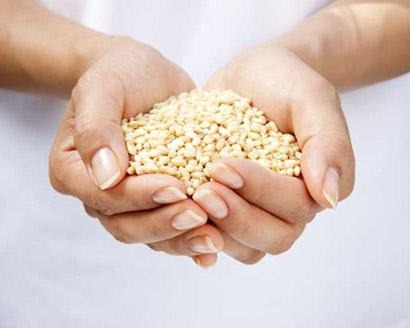The Whole-Grain Debate
For a while there, whole grain seemed to be the marketing phrase on every product: whole-grain cereals and whole-grain breads were everywhere. According to a study from Harvard University, published by Cambridge Journals, the global market for whole-grain foods "is expected to exceed $US 24 billion by 2015."
The popularity of whole grains, however, seems to have diminished in light of the wheat-free, gluten-free diet. Gluten-free foods are, as it turns out, hitting 2013 food trend predictions across the board.
So what happened? Turns out, consumers found out that not all whole-grain products were truly whole-grain, and they weren't too happy. "The variety of terms used to describe 'whole grains' as well as the unclear and inconsistent labelling of WG ingredients by manufacturers make it challenging for consumers and organizations such as schools and workplaces to identify more healthful WG products," the Harvard report says.
Currently, there are few regulations on the labelling of foods as "whole grains," Bob Klein, founder of Community Grains tells us. Products can have a mixture of whole grains, refined grains, and sugars, and proportions can't be found on the nutrition label. So consumers looking for true whole-grain products? "They've been lied to," Klein says.
To get to the bottom of the whole-grain debate, millers often start with the grain as it comes. Most grains have four components: the hull (an inedible shell), the bran, the germ, and the endosperm. Bruce Weinstein, author of Grain Mains, tells us that every part of the grain (save for the hull) offers nutrition. "When you eat milled grains like white rice and pearled barley, the bran is gone and the germ is gone, and there's a lot of nutrition to be had there," Weinstein says.
The germ, which carries a lot of nutrients, and the bran, which carries the fiber, are often knocked out in the roller milling process, leaving only the sweet but nutritionless endosperm. Most whole-grain products have actually had the three components of the grain separated first, Klein says, and then the germ and the bran are put back in. But somehow, it's still not the same as keeping all three parts together, which Klein calls true whole grain. "The bran isn't just fiber, it's fiber in connection to everything else, in connection to the germ with nutrients associated with fatty acids," Klein says.
And even though stone-milled grains tend to leave three components together before making flour or pasta, oftentimes millers can say their products are stone-milled without actually using a stone mill. "It can sit on the ceiling, and grains can pass under the stone mill," but it's still not stone-milled, Klein says. They call it a "drive-by stone mill."
So how does one buy true whole-grain products, that are both delicious and healthy? Click on through our slideshow for tips from the pros.
